Creative Crafts for Preschoolers to Bond with Pet Birds
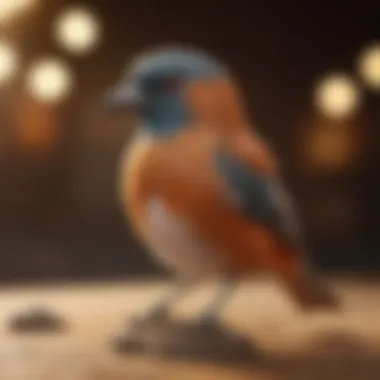
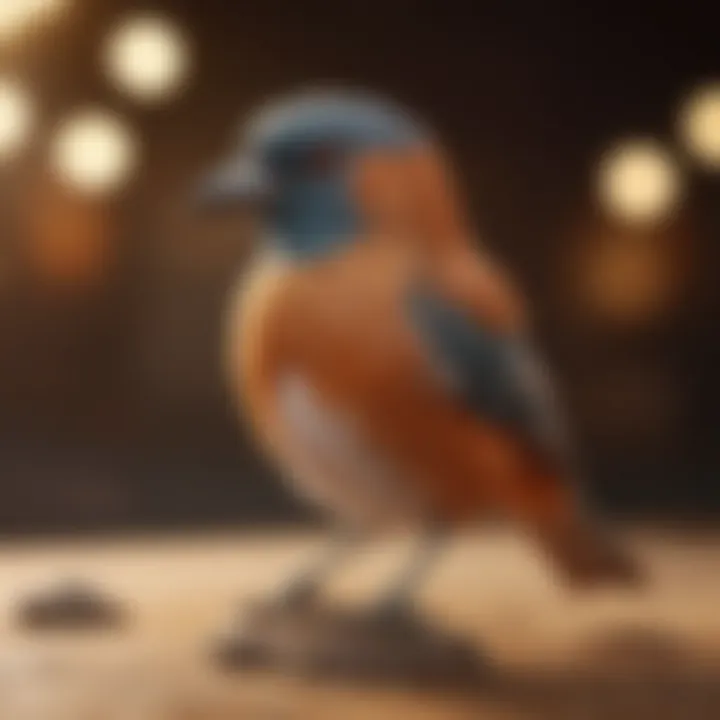
Intro
In the realm of early childhood development, engaging and creative activities play a vital role. For families with pet birds, crafting serves as a remarkable pathway to not only entertain preschoolers but also to foster a deeper connection with their avian companions. This blending of education and enjoyment echoes through various projects that challenge the imagination while enhancing children's fine motor skills and cognitive abilities. The crafts proposed in this article are more than mere activities; they stand as gateways to unraveling concepts of wildlife appreciation and responsible pet care. As these little ones immerse themselves in crafting, the resulting interactions with their birds could culminate in unforgettable memories and cherished relationships.
Care Tips
To establish a thriving environment for both children and their pet birds, understanding necessary care routines is essential. This connection goes beyond simple interaction and delves deeply into practical aspects of bird ownership.
Daily Care Routines
Preschoolers can begin their journey into responsibilities by helping with daily care routines such as:
- Providing fresh water.
- Preparing healthy snacks and seeds.
- Observing the time spent with the pet birds.
These small tasks introduce children to the idea of commitment, teaching them the importance of regular care.
Cage Setup and Maintenance
Engaging children in discussions about where birds live helps deepen their understanding of avian habitats. Is the cage spacious enough? Does it contain perches, toys, and safe, appropriate materials? Together, adults and children can set up the cage to create a safe and stimulating environment.
Hygiene and Cleaning Practices
Maintaining hygiene around pet birds is vital. Remind children that cleanliness protects both their health and that of their feathered friends. Tasks may include:
- Cleaning food dishes regularly.
- Replacing bedding and lining in the cage.
These activities enhance their sense of responsibility.
Seasonal Care Adjustments
Changes in seasons often require adjustments in care. Educating young ones about how temperature and humidity levels may affect their birds encourages nurturing knowledge and concerns for their well-being. Watching birds during winter and summer offers insights into their behavioral adaptations.
Behavioral Insights
Understanding pet bird behavior can lay the foundation for a harmonious relationship.
Understanding Bird Body Language
Encourage children to learn how birds communicate. Can they distinguish excitement from illness through the bird's movements? Teaching kids to observe body language helps in fostering exclusive one-on-one time with their birds.
Common Behavioral Issues and Solutions
In any experience with pets, challenges arise. Common issues like feather plucking or not eating can feel alarming. Showcase to children how gentle and patient engagement with birds often leads to unraveling basic concerns with ease.
Positive Reinforcement Techniques
Using treats to reward birds when they engage positively can guide children to understand feelings of trust and love. Seek calm interaction that reassures the feathered friend.
Understanding the Importance of Crafts in Early Childhood Development
Crafts are more than mere activities for preschoolers. They serve as essential components of childhood develompment, shaping a child's understanding of their world. Engaging in craft projects associated with pet birds offers several beneftis. Each project provides more than fun; it helps embed key learning principles.
Crafts as a Tool for Learning
Crafts function as a medium of education. These activities enable preschoolers to explore concepts such as colors, shapes, and even basic biology. Projects centered around pet birds allow children to connect with these natural creatures. By creating bird bags or simple feeders, kids learn the importance of caring for living beings. This interactive learning solidifies knowledge about birds, their habitats, and their roles in nature.
Enhancing Fine Motor Skills
One significant result of craft activities is the enhancement of fine motor skills. Children learn to manipulate small objects, cut with scissors, and glue various materials together. Each movement helps improve dexterity. Fine motor skills are vital for future activities such as writing or using electronics.
For example, when children cut out bird shapes from paper or string beads for avian-themed jewelry, they work on coordination. Over time, these repeated activities cultivate sufficent skills and build confidence in handling different crafts.
Fostering Creativity and Imagination
Crafts spark imagination and promote creatvity. They grant preschoolers the freedom to express themselves without fear or discretion. Designing imaginative birdhouses allows kids to visualize and implement their ideas. Persistent creativity molds inventive thinkers for the future. It nurtures a capacity for problem-solving too. When a student faces an issue with an art project, discovering a resolution organically then becomes a learning event. Children find joy not only in the finished product but processes of creation too.
"Craft projects foster essential developmental skills that aid young learners in understanding their environment and themselves."
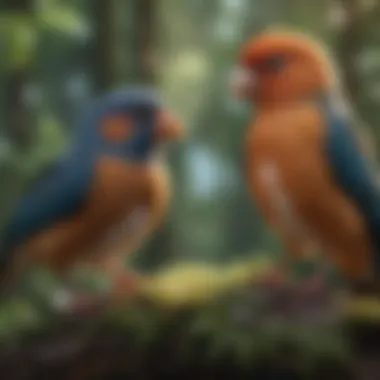
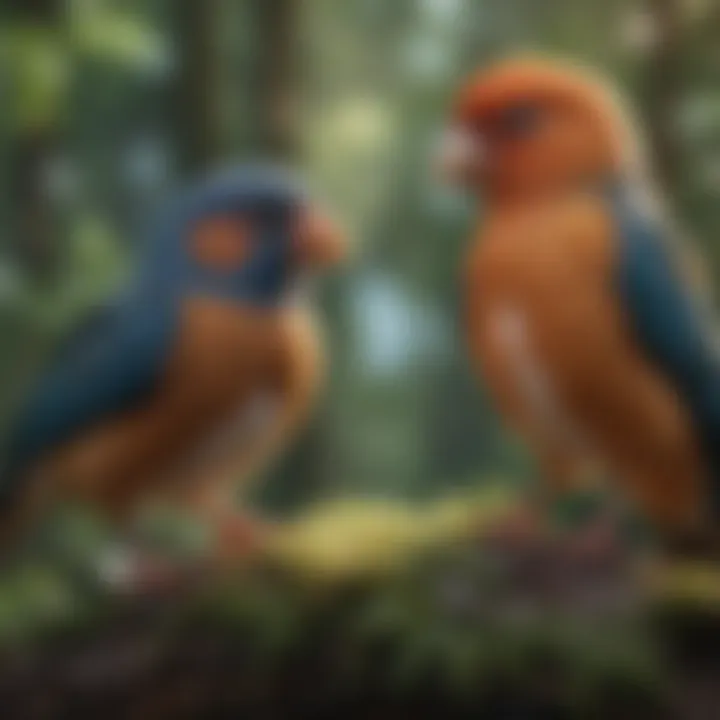
Through understanding these fundamental aspects of crafting, parents and educators can create educational experiences that closely tie to both fun and learning. This ultimately builds a strong base for further learning in life.
Essential Supplies for Pet Bird Crafts
When engaging preschoolers in crafting activities themed around pet birds, selecting the right materials is crucial. Proper supplies not only ensure the safety of young children but also enhance their discovering and learning process. For adults guiding these little learners, understanding what items suit both their crafting goals and the well-being of pet birds can help create a safe, engaging experience.
Safe Materials for Young Children
Using child-friendly materials is essential to avoid risks of choking or other hazards. Craft supplies should be non-toxic and easy to manage to minimize accidental injuries. Consider these materials:
- Paper: Variety like construction paper or recycled paper for making bird crafts.
- Scissors: Safety scissors designed for preschoolers to prevent cuts, teaching them how to manage tools.
- Glue: Non-toxic glue sticks are easy to use and mess-free.
Avoid using materials that pose risks, such as small beads or sharp items. Checking labels for safety assurance helps in making the right choice.
Bird-Friendly Craft Supplies
It is important that the crafting process itself is not harmful to pet birds. Certain supplies can be safe for birds while allowing kids to create. Opt for materials that won’t cause any fears or toxic chemical exposure when near birds. These include:
- Natural fibers: Cotton and jute twine can be used for various crafts and are safe if nibbled.
- Bird-safe paint: Non-toxic and lead-free paints allow children to express creativity while being safe for toucans, budgies, or any avian companions.
- Edible items: Organic grains, fruits, and vegetables can serve dual purposes—decorations and snacks for birds post-crafting.
Choosing these items mitigates risks, fostering an environment where children's creativity flourishes without compromising avian safety.
Creating a Craft Station
A dedicated crafting area encourages focus and enjoyment. Organizing supplies effectively reduces mess and enhances safety for the preschooler and pet bird. Here are a few tips to create a functional craft station:
- Designate an area: Choose a flat surface in a space that can handle spills and mess.
- Supply sorting: Use labeled containers for easy retrieval. Sorting supplies promotes organization and teaches kids ownership of their craft area.
- Safe storage: Position potentially dangerous items out of reach until used. Teach preschoolers about proper care around their pet birds with reminders about the boundaries of materials.
Overall, well-planned supplies and space not only promote creativity but also ensure a secure environment.
Remember: Ensuring that all materials are suitable for both children and their pet birds enhances the experience, deepening their relationship through crafts.
Simple Craft Ideas Featuring Pet Birds
Crafting with preschoolers is not only an enjoyable activity but also provides meaningful learning experiences. This section delves into simple craft ideas featuring pet birds. These projects serve as vital forms of expression and creativity, helping youngsters to engage actively with the world around them. Crafting can enhance cognitive skills and fine motor capabilities while giving children an opportunity to connect with their feathery companions. Each craft described here emphasizes familiarity with birds, nurturing appreciation for nature and sparking the joys of creation.
Bird Feeders from Recyclables
Making bird feeders from recyclable materials is an excellent way to teach children responsibility. It shows the importance of reusing items rather than discarding them. For instance, using a plastic bottle, preschoolers can create a simple feeder. They can start by cutting the bottle to open it. It can be helpful to supervise when using scissors, ensuring safety throughout.
Next, small holes can be added to the sides near the bottom so the birdseed falls out. Kids can pour in birdseed, and then hang it on a tree. Not only is this a craft project but it also introduces concepts of caring for animals. Kids gain experience in understanding bird feeding habits as they witness birds arriving.
The feedback loop between creating the craft and observing birds is rewarding, culminating in a sense of accomplishment.
Key Points:
- Recyclable materials foster sustainability awareness
- Hands-on activity nourishes creativity
- Encourages responsibility toward wildlife
Colorful Paper Birds
Crafting colorful paper birds allows children to explore colors while replicating avian forms. Utilizing craft paper of various shades, they can cut out shapes resembling different birds. Simple bird silhouettes can be traceable templates.
Preschoolers can also practice using different crafting supplies like markers, googly eyes, and feathers to decorate their paper birds. It fuels their imagination. This project teaches them about different bird species while promoting a tactile experience.
Also, children can learn to identify various birds when their creation resembles real species. Decorating fosters discussions on bird anatomy, as well, engaging children’s curiosity.
Benefits:
- Promotes color recognition and creativity
- Facilitates species identification
- Strengthens fine motor skills
Handprint Bird Art
Handprint bird art integrates a personal touch into artwork. With some child-friendly paint, they can dip their hands, press them on paper, and create bird bodies. Subsequently, they can add details—wings, legs, or beaks. Kids might decide on any bird type, expanding their interaction with avian themes.
This craft not only results in a masterpiece but also creates a sentimental keepsake of their growing hands. All parents appreciate the evolving skill level captured during such creative exercises.
The discussion generated during this craft can cover ideas about feeding habits, living spaces, and the significance of birds in ecosystems, all adding depth to the learning process.
Highlights:
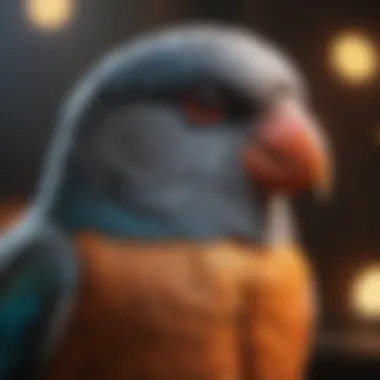
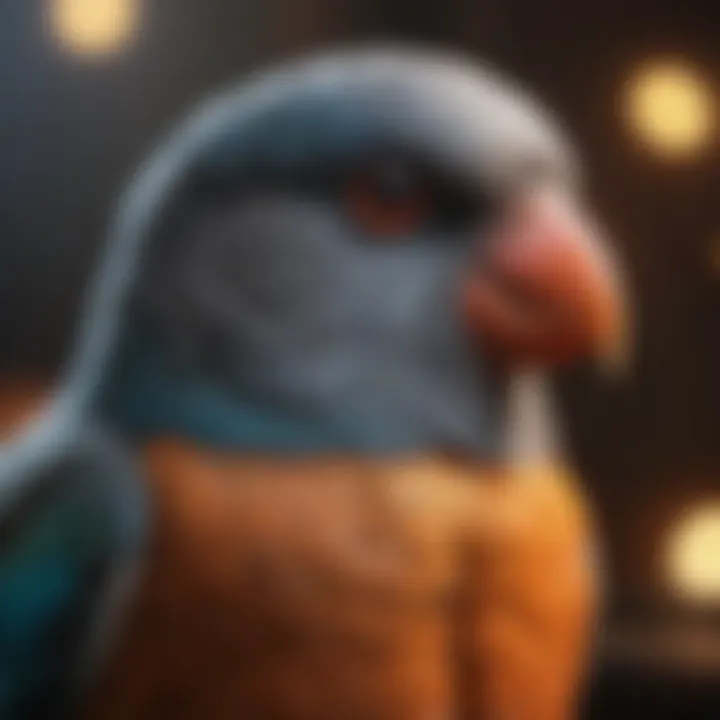
- Creates memorable keepsakes
- Serves as an educational tool about ecosystem roles
- Versions can adapt to changing seasons or themes
Nature and Observation Activities
Engaging in nature and observation activities is crucial when working with preschoolers and their interactions with pet birds. These activities serve as a bridge between creative expression and real-world understanding of avian behavior and habitats. Not only do they provide an opportunity for hands-on learning, but they also enrich children's vocabulary and comprehension of ecosystems.
Whether observing birds in a park or engaging in crafts that mimic bird movements, these activities stimulate curiosity. They encourage children's cognitive thinking and allow them to draw connections between the crafted items and real birds. Creating this foundation is vital for developing an appreciation for wildlife, which is particularly important in nurturing empathy and respect for all living things.
Bird Watching During Crafts
Not all crafts for preschoolers need to happen indoors. Bird watching can be combined with crafting to create both an observational and experiential learning opportunity. Going outside and identifying local birds not only exhilarates the children but also helps them relate better to their creations.
During a bird watching session, consider using the following approaches:
- Binocular Use: Provide kids with mini binoculars to help them focus on birds in their natural state. This fosters teamwork as children take turns spotting and sharing findings.
- Observation Journals: Encourage children to make simple bird profiles. They can draw their favorite species, adding a section for color, size and habitat. This merges art with observation effectively.
- Interactive Statements: Ask questions as the children watch, such as,
Educational Benefits of Bird-Themed Crafts
Crafting with a focus on pet birds provides numerous educational advantages for preschoolers. These benefits surpass mere artistic expression, tapping into crucial cognitive, social, and emotional development milestones.
Learning About Avian Habitats
Engaging preschoolers in activities involving avian habitats lets them learn remarkably about the ecosystems catering to birds. Activities like creating habitat dioramas or simple poster boards can significantly enhance understanding.
- Increased awareness: Kids learn how different birds adapt to their environments, identifying elements like nests, water sources, and available food.
- Observation skills enhancement: Observing various birds in simulated habitats helps children to notice intricate details. Watching birds interact with their environment is a key takeaway.
- Integrating science: Activities can blend art with science, exposing children to scientific concepts like ecology. Learning about indigenous bird species connecting arts and crafts with educational themes contributes to a well-rounded development.
Child engagement through structured activities leads to lasting understanding. When creating, they remember the associations skills likes critical thinking and further explorations of nature.
Understanding Bird Behavior through Crafts
Crafts that illustrate bird behavior afford preschoolers a clarifying insight into how birds function in diverse settings. Utilizing art as a educational method provides a more engaging experience for the child.
- Behavior observation: Creating visual representations of birds in their everyday actions deepens understanding. For example, assembling a craft focusing on nesting or feeding can reveal intriguing patterns children later analyze.
- Encouragement for curiosity: As children develop questions about bird behaviors, crafts serve as an effective base for those inquiries.
- Promoting empathy: Helping them appreciate how their pet birds see the world, materializing simple diagrams or puppets to demonstrate, results in nurturing an empathetic inclination towards all living beings.
Engaging children in crafts surrounding their pets shaped their creativity while fostering a profound understanding of the nature surrounding their feathered friends.
Crafts tailored for birds open the dialogue on various interrelationships within nature. The beautiful union of art and science crafted into creative spaces provides sufficient opportunities to learn while playing.
Incorporating Crafts into Daily Routines
Crafts can play an integral role in daily routines for preschoolers. By weaving creative activities into their schedules, children expand their learning opportunities while engaging with the world around them. Nexius, involving crafts and pet birds, provides a unique approach to routine learning. Integrating crafts with pet duties can nurture responsibility and creativity at the same time.
Schedule Craft Time with Pet Duties
To effectively incorporate crafts into your daily schedule, consider allocating specific times for creative activities. This could align with pet care duties, such as feeding or cleaning the birdcage. For example, before or after taking care of your pet, involve children in making bird-themed projects like feeders or toys. This method not only keeps children engaged but also fosters a sense of contribution and teamwork within the family.
Children may also develop awareness about time management through this experience. They can learn to prioritize their responsibilities while still having fun. Scheduling crafts throughout the week instills a rhythm to the routine, helping children anticipate their weekly engagements with crafts and their avian friends.
Seasonal Craft Activities with Themes
Incorporating seasonal themes can elevate the excitment around crafting. Each season brings its own unique qualities and colors, inspiring various projects. For instance, during spring, contribute a vibrant craft activity such as decorating bird feeders with seasonal patterns.
Different seasons provide different types of birds to observe as well, allowing a connection to nature. Summer can embrace bright, sunny themes like painting paper plates to resemble exotic birds. Following this routine throughout the year encourages not just creativity, but also enhances observation skills and knowledge of natural habitats. Crafting with a seasonal lens helps maintain the creative energy among preschoolers and connects them deeply to their bird companions.
Engaging in crafts with themes allows preschoolers to relate their creative work directly to the natural world around them, fostering a strong link between imagination and reality.
Promoting creative craft ideas tailored to seasons and aligning them with pet duties establishes a nurturing environment for children. This leads to both personal growth and deeper bonds with their pet birds, enriching the overall experience and ensuring memorable moments together.
Encouraging Interaction Between Preschoolers and Pet Birds
Encouraging interaction between preschoolers and pet birds is crucial for fostering a nurturing environment for both the child and the bird. Involving children in engaging activities with their avian companions enhances their understanding of life sciences and builds a sense of responsibility and empathy. This interaction turns learning into a fun experience. Engaging with birds can lead to valuable lessons about communication, care, and friendship.
Understanding Interaction Benefits
- Social and Emotional Growth: Through caring for a pet bird, children can develop trust. This nurtures emotional intelligence as they learn to read the feelings of another living being.
- Curiosity and Exploration: Interaction encourages preschoolers to ask questions and find out how birds live and behave. Such curiosity is the foundation for further learning.
- Responsibility: Children realize that a bird requires care, fostering a reputable sense of responsibility.
Safe Ways to Promote Bird Interaction
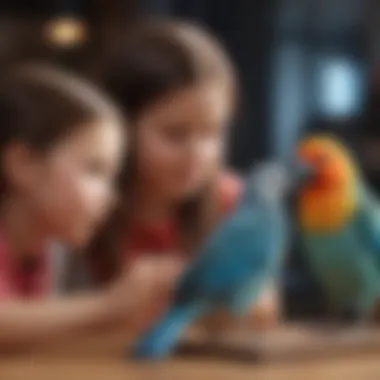
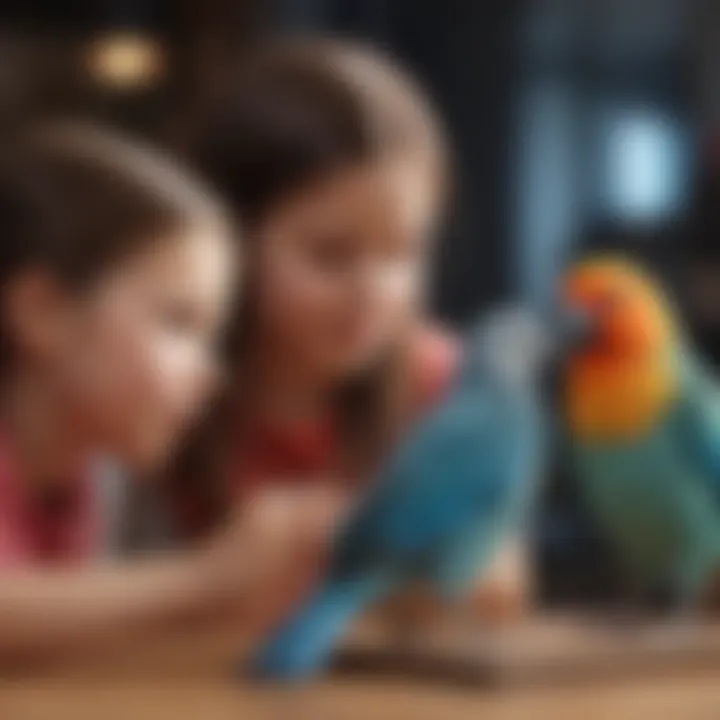
Creating a safe space for interaction is vital. It’s important to oversee the distance between preschoolers and pet birds, ensuring safety on both sides.
- Environment is Factor: Choose a calm area where both the child and bird feel safe. This could be a quiet room with little activity. Avoid noisy environments or places with potential hazards.
- Positive Reinforcement: Encourage gentle behaviors. Use praise and simple rewards when the child interacts appropriately with the bird. Express love for proper behaviors such as calm talking or offering treats.
- Establish Boundaries: Teach children what actions are safe and how to interpret bird body language. If a bird is flapping its wings or making loud noises, this could mean it feels scared or agitated. Teach them to give the bird space in such moments.
Using these safe methods will help create a positive bond among preschoolers and their feathered friends. It instills a proper understanding of safe practices early on.
Bird Handling Basics for Young Children
Understanding how to handle birds safely is essential for both the child and the pet. Children need guidance to ensure their handling practices are appropriate and respectful.
- Two-Hour Rule: Founded on the comprehension of a bird's natural lifecycle, limit interactions to short sessions. Keep in mind that birds may get easily stressed or overwhelmed.
- Approach Slowly and Calmly: Instruct children to approach a bird in a slow manner, allowing the bird to get acclimated.
- Gentle Hands: Children must practice a delicate touch. Teach them to support the bird’s body properly without grabbing excessively.
- Never Force Interaction: If a bird does not want to be held, children should respect its space. They need to understand that different birds have different temperaments.
Knowing these basics serves not only to ensure a positive interaction but also to contribute to a better understanding of animal collaboration and symbiosis.
Always remember, interaction is not just about games; it’s about advocacy and respect for all living beings.
Safety Considerations for Craft Activities
Crafting with preschoolers can be a valuable experience, but safety should always come first. Understanding potential hazards can help ensure a joyful and secure learning environment. Pet bird crafts can involve different materials that, if not handled properly, may pose risks. Therefore, it is critical to address these safety considerations right from the start.
Avoiding Common Hazards
Creating an enjoyable craft experience means minimizing the risk of accidents or injuries. Here are some common hazards to be aware of:
- Sharp objects: Scissors, glue guns, or any sharp tools should be kept away from small hands, or suitable tools should be chosen for craft projects like plastic scissors.
- Non-toxic materials: Selecting safe, non-toxic supplies is essential for any activities that involve direct touch. Always check for certifications that indicate products are CPSIA-compliant.
- Small parts: Avoid small components that can present a choking hazard. Choose bigger materials that are safe for preschoolers.
By implementing these guidelines, caregivers can prevent avoid_some of the negativities associated with crafting. This prepares children for a more successful artistic bout while interacting with their pet birds.
Supervising Craft Sessions
Supervision during craft sessions ensures that safety instructions are followed and that every small hand is guided to do the right actions. Here are steps to maintain proper supervision:
- Stay involved: Keep an eye on all aspects of the crafting process, from material selection to tools usage.
- Provide instructions: Before starting, explain each step clearly. Use simple language to draw attention to safety protocols.
- Encourage teamwork: Having an adult craft along with the children fosters a secure environment. It creates positivity among the children.
Showcasing Completed Crafts: Ideas for Display
Showcasing completed crafts serves as an integral aspect of the crafting journey. It not only brings a sense of accomplishment to preschoolers who have invested time and effort into their projects, but it also fosters a deeper appreciation for their creations. In this section, we will explore various methods for displaying these crafts, encouraging reflection on their work, and enhancing family engagement.
Prominent display locations, such as living rooms or communal areas, make children proud of their artistic expressions. By displaying their crafts, the bond with their pet birds can become more explicit and pronounced. Children connect visual elements, skills learned, and emotional involvement solidifying the experience's significance.
Creating a Craft Gallery at Home
Establishing a craft gallery at home allows families to prioritize creativity and self-expression. A separate wall or a designated area can showcase various crafts devoted to pet birds. This initiative can be engaging and systematic, turning art display into a little exhibition.
- Choose a location that can be viewed daily.
- Use strings or bulletin boards to hang crafts.
- Create tags for each piece, briefly explaining the inspiration and technique involved.
This interaction with their artwork enhances children's desire to share more, facilitating conversation about both their work and their pet birds. Beyond encouraging artistic endeavors, a craft gallery nurtures pride and recognition among family members visiting your home.
Sharing with Friends and Family
Sharing completed crafts not only boosts children's confidence but also educates others about their creative processes. This effort can take many forms, including open houses, social media posts, or even surprise artwork gifts to family members.
- Organize Craft Show-and-Tell: A scheduled time for children to display their work and discuss it with loved ones.
- Digital Sharing Across Platforms: Parents can post pictures or videos of the crafts on Facebook or Reddit, inviting reactions and sharing experiences.
- Host a craft-themed family gathering: Include activities like a mini exhibit on pet birds and their role in art, encouraging everyone to discuss and engage.
Sharing completed crafts allows children to feel validation and enthusiasm regarding their artistic expression. Bypassing notions of limitations tied to mere physical form, art becomes a means of connection, translating their experiences with pet birds to others.
Concluding Thoughts on Pet Bird Crafts
Crafting with preschoolers is not just a creative outlet; it anchors vital learning experiences. The relationship formed through bird-themed crafts extends beyond simple activities. This fosters not only creativity but also cognitive development and emotional bonding with pets.
Reflecting on Developmental Gains
Engaging in crafts focused on pet birds stimulates multiple areas of growth in young children. For instance, tasks like creating bird feeders or coloring paper birds enhance fine motor skills. Rigorous hand movements required for cutting and gluing help strengthen these essential skills. Also, recognizing colors and identifying shapes during these crafts boosts cognitive functions. Connecting art and avian education also inspires curiosity about the world around them, making learning relevant and pleasing.
Interestingly, children learn problem-solving skills through the crafting process. When crafting doesn't go as planned, they negotiate solutions. Such moments teach resilience and innovation, abilities essential for their future.
Building Lifelong Connections through Crafts
Crafting extends the love for pet birds beyond tangible projects. This process helps forge deeper relationships between children and their feathered friends. While they engage in creating crafts, children often narrate stories about their pets or think of ways to care for them better. This self-motivated thinking catalyzes a sustainable interest in their birds.
Sharing completed crafts at home also reinforces social bonds. Showing these creations to family or friends fosters pride and encourages communication skills. The dialogue built around such crafts encourages even the shiest child to express their thoughts. As children learn the significance of responsibility during pet care in junction with their crafting, they gain confidence that often lasts a lifetime.
By incorporating bird-related arts and crafts, models of compassionate behavior towards animals crystallize among preschoolers. Living and learnign with a pet bird can instill empathy that will carry into adulthood.
In RESUME, the ability to craft brings out creativity, but the emphasis on gene unity with animals generates unique overall developmental benefits. Adhering to these simple pet bird crafts yields long-term engagement with ideas of nature, compassion, and adaptability.















